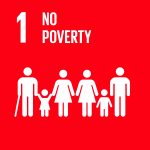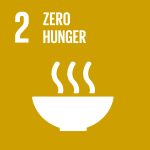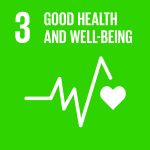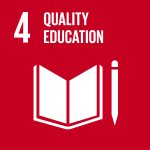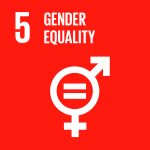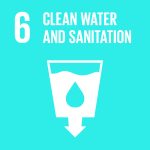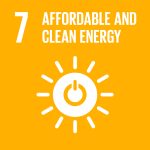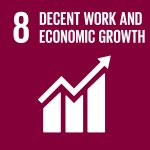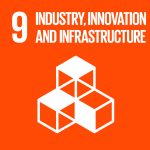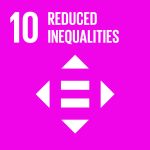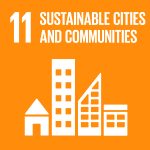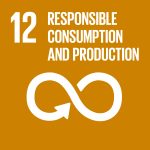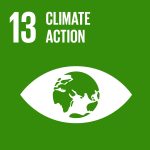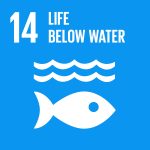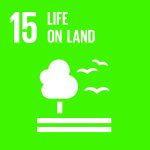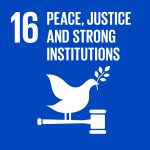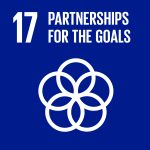Esta web utiliza cookies para que podamos ofrecerte la mejor experiencia de usuario posible. La información de las cookies se almacena en tu navegador y realiza funciones tales como reconocerte cuando vuelves a nuestra web o ayudar a nuestro equipo a comprender qué secciones de la web encuentras más interesantes y útiles.
Communication campaign on the SDGs: "Set your SDGoals! YOU are part of the chain towards sustainability!"
Description
Institution
Organizations/areas of the university involved
Universitat Politècnica de València (UPV)
Centro de investigación Arte y Entorno de la UPV CIAE
Departamento de Dibujo de la Facultad de Bellas Artes
Centro de Cooperación al desarrollo (CCD) UPV
Universitat de València (UV)
Universitat d’Alacant (UA)
Universitat Jaume I de Castelló (UJI)
Universitat Miguel Hernández de Elche (UMH)
Conselleria de Transparència, Responsabilitat Social, Participació i Cooperació de la Generalitat Valenciana.
Country
Spain
The five Public Universities of the Valencian Community in September 2018 called the contest “Communication Campaign on the SDGs”, with which to generate ideas for the participation of the university community in the dissemination and communication of the SDGs.
With aim for encouraging the participation of this commonwealth through art, in fields of solidarity and development of cooperation in a creative, artistic and above all sustainable way, ATOTARO Graphic Diversity Group, made up of 4 members of Universitat Politècnica de València, professors and grantees, won the first prize in this initiative with a PERFORMATIVE ENGRAVING WORKSHOPS project to take place in the university community.
The winning project implemented by the team made up of Ana Tomás, Toni Simarro, Tania Ansio and Rosángela Aguilar from Universitat Politècnica de València, was developed based on an action plan which established a schedule, budget viability, negotiation within university agents and adaptation of logistics to the characteristics of each academic institution.
The execution of the workshop involves the creation of a visual identity through Design: Adaptative layouting of the SDGs logotypes, purchase and preparation of the material, chipboard cutting prep sessions, workshop’s running and final art exhibition.
There has been 5 printing workshops, one in each institution. SDGs iconography has been used as a tool for reapprochement, solidarity and empathy towards each of these 17 glocal issues.
We seek to carry out the events in collaboration with the teaching staff / students or simultaneously in Cooperation Conferences in each university for greater visibility of these workshops in a way that surprises, attracts and activates other approaches to the SDGs. They are endorsed by multiple projects, congresses, publications and exhibitions, both national and international, regarding the care of nature and environmental sensitivity.
Results and impact measured or expected
More than one hundred people have participated in each workshop.
Participation in this cooperation program has achieved excellent results in terms of the human capital represented: students, institutional staff, professors and researchers have been mobilized with an immediate result of a greater knowledge of the SDGs. In this activities, they have discovered what the SDGs are, their purpose and importance.
On the other hand, self-made & personalized merchandise bags and shirts made with the same printing scheme has contributed to the creation of an environment-friendly communication SDGs campaign.
Impact on the Educational Community: weekly exhibitions of the 17 SDGs prints created in each institution forging them as part of each institution’s art collection and making SDGs visible and transcendent to thousands of passersby and visitors.
Online presence results: By registering a reach of 14,750 visitors within the last 60 days. Online activity on: https://www.facebook.com /ATOTARO.ODS
Improving food products either consumed or sold at the university (promotion of the use of organic food, use of local foods and elimination of precooked foods): SDG 2 and 3
Transversally, the communication campaign relates to gender equality (SDG 5), Reduction of inequalities (SDG 10) and promotion of the Basque culture / language (SDG 11).
The measurements are made by the action group itself through observations and surveys on the campus.
Connection with the SDG framework
Students have several tasks for recognizing the SDGs: On a long table, the 17 SDGs logotypes in laser-cut matrices are found with each identifying color ink tubes laying next to them and staining rollers. It is an attractive, colorful image that encourages to participate by spreading the ink on the surface of the SDGs of their choice.
Another space is adapted to stamp on several surfaces such as paper or fabric. On this table different explanatory texts about each SDGs are offered through these 3 options: Title and SDGs number (explanation), Global actions and/or Local actions. Each individual contributes with a text with his/hers poetic interpretation.
In each university an SDGs sculpture is installed, almost 40 pieces of chipboard of 19.6 x 19.6 in assembled with total volume of more than 86.11 sq ft. Each board contains two prints and SDGs texts.
[https://www.facebook.com/ATOTARO.ODS]
Another important aspect is also the network that was created to promote the project (ODS 17), which includes public entities such as the Basque Government, the Diputación de Bizkaia, the Bilbao Water Consortium or Garbiker (responsible for the management of waste in the province), together with private entities such as Obra Social La Caixa or EROSKI.
Barriers and follow up
The following barriers can be found within the workshop’s realization: The conductors must have know-how of artistic print techniques for its execution. Also great investment in materials and logistics is considerable: laser cut matrices, water-based inks, rollers, acetate sheets, paper, shirts, cloth bags, chipboard pads, likewise, a transporting vehicle and payment of staff and gasoline allowances are required meaning that close collaboration with each University to ensure student and volunteer participation during each workshop is necessary.
Nevertheless barriers can be supressed with good planning by coordinating with the Centers and preparing materials prior to each workshop. In each location, the installation of work spaces for image-stamping requires a workforce Once the first workshop has been done, the following workshops are done more easily.
In conclusion, with a sufficient departure for expenses, linking the workshop around conferences or seminars on SDGs is a guarantee of success
Education 4 SDG funciona gracias a WordPress

